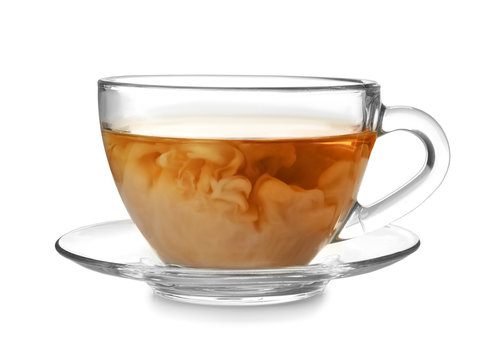The story of the development of black tea in Taiwan what famous high-quality black tea are there in Taiwan? Comparison of Flavor characteristics between Taicha 21 and Taicha 18
Taiwan introduced black tea production during the Japanese occupation (1895-1945). By the time the Japanese arrived in Taiwan, Taiwan was already producing and exporting tea, although most of it was oolong tea. To protect their green tea exports, the Japanese banned the production of mildly oxidized oolong tea (a lighter, greener and more flowery oolong tea) in Taiwan to avoid competing with Japanese green tea in the global market. Instead, they promote the production of black tea to cater to Western tea tastes.
The origin of black tea in Taiwan in 1923, the agricultural department of Taiwan under Japanese rule imported Assam tea varieties from India and distributed seeds to be planted in four different regions, three in different regions of Taiwan and one in Japan. The Riyue Lake area is 600-800 meters above sea level, with fertile soil, short sunshine time and moist fog, which is the most successful black tea producing area in the four regions. In 1936, Taiwan Tea Research and Promotion Station (TRES) formally established a research center in Yuchi Township, Nantou County, dedicated to the cultivation and production of black tea. Due to the massive investment and promotion of black tea production during the Japanese period, black tea was grown for export in many tea areas in Taiwan, including Shimen on the north coast, Kansai in the northwest and southeast of Taitung. Although Taiwan has been famous for its oolong tea since the 19th century, black tea accounted for more than half of its total output by 1937.

The end of black tea exports Taiwan's black tea industry flourished for decades until Taiwan was forced to withdraw from the United Nations in 1971. After World War II, the Japanese occupation ended. Around 1971, high-quality Taiwan black tea became more and more expensive to trade on the global market, reducing demand. Many families producing black tea began to make oolong tea to satisfy the taste of the local people. Unfortunately, many people went bankrupt and never returned to Taiwan at the height of the global black tea trade.
Taiwan Modern Black Tea at the beginning of the new millennium, local people in Taiwan became interested in black tea because it had a milder effect on the digestive system than green oolong tea such as Baozhong or alpine oolong tea. New and young tea producers have partnered with TRES to create new varieties of black tea, such as honey-scented or insect-bitten black tea, such as Blossom Dearie. TRES also released new varieties TRES # 18 and TRES # 21 in 1999 and 2008, both for the production of high quality black tea. Although black tea still accounts for only a small part of Taiwan's tea production today, the selection and variety of black tea have increased significantly in the past decade.
Famous Taiwan black tea there are several famous Taiwan tea varieties used to produce black tea, including in northern Taiwan, Yingzhi Hongxin very # 8 Assam (selected from India's Assam tea variety Jaipuri), Hongyu black tea and Taiwan tea No. 21. Today, the most famous is Taicha No. 18, that is, Hongyu black tea. Sun Moon Lake in Yuchi is now the main producer of black tea in Taiwan, but there are many small producers of back tea on the island.
Important Notice :
前街咖啡 FrontStreet Coffee has moved to new addredd:
FrontStreet Coffee Address: 315,Donghua East Road,GuangZhou
Tel:020 38364473
- Prev

How many degrees of water temperature does Taiwan's honey-scented black tea taste better? How does honey fragrant black tea make milk tea good?
Classic Taiwan loose leaf black tea. It's all simple, but full of the kindness of nature. It has a bright amber color, charming honey aroma, persistent and naturally sweet aroma. There is no extra flavor added. It's the best time when you want to drink tea. Asia's famous fully fermented tea. Our direct trade advantage ensures
- Next

The small details of the production process of milk tea an analysis of the sequence of milk and black tea
Will you add milk to your tea? Or are you a staunch "pure tea theorist"? There is endless debate about when, how and why milk should be added. Many cultures around the world put milk in their tea, so let's study this divisive issue. Add to the tea
Related
- Being chased out of the rain in front of Starbucks?! Store: Sheltering from rain under umbrellas poses a safety hazard
- The white moonlight has changed?! Lucky launches "Big Winter Pear American"
- Hand-brewed coffee three-stage method, high-sweet and universal brewing method to share! What does the high sweet water level of hand-brewed coffee mean?
- What is the difference between raw, refined and full espresso coffee? How to extract espresso and taste good?
- A complete list of coffee bean names and their meanings! What is Yejia Shefi coffee? Where is Mantelin coffee?
- What grade does Arida Manor Kaduai coffee beans belong to? What treatment is Arida ASD slow anaerobic sun exposure?
- The milk tea cup becomes smaller?! Overlord Tea Girl launches a new "Return to Yunnan" series
- Accused of selling counterfeit and high-priced coffee beans! Well-known boutique coffee brand "Oukelao" bowed and apologized!
- How to make espresso dumplings? Can I eat coffee and glutinous rice balls together?
- Save the unformed and stagnant powder cakes in one second! What is the problem with stagnant water in the powder bowl of the espresso machine?

